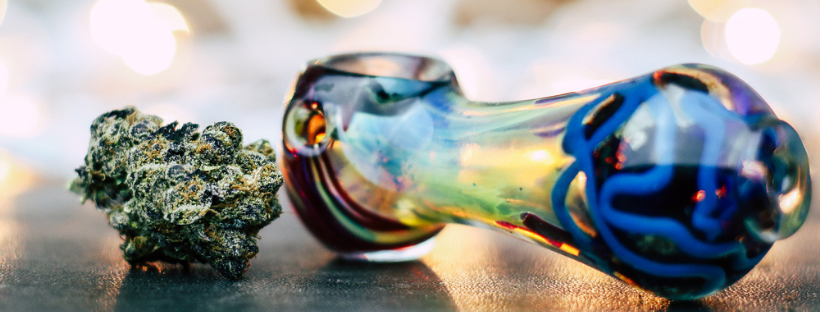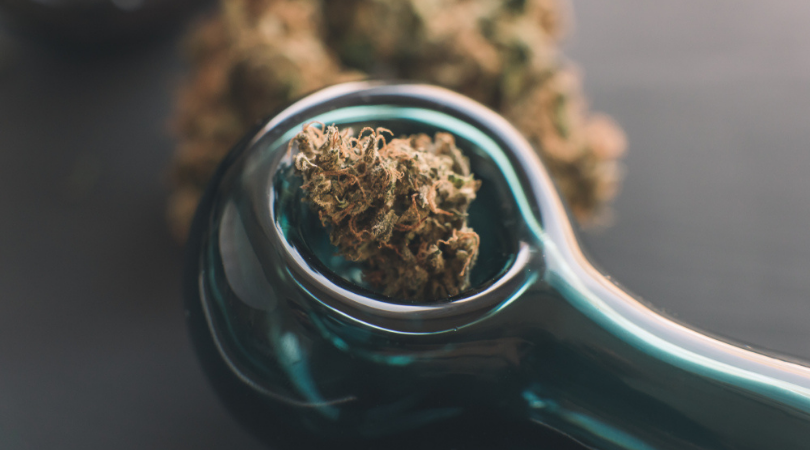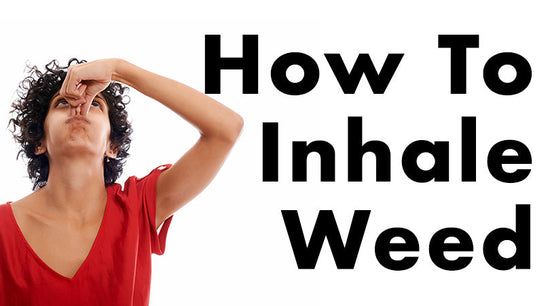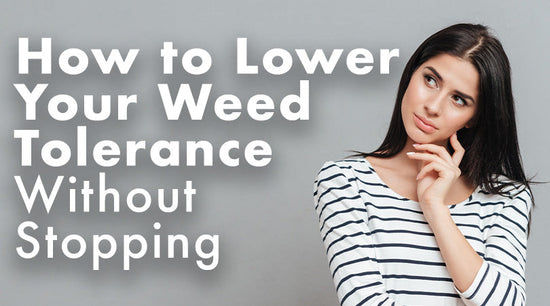Weed Tolerance Hacks: Combatting High THC Tolerance
For frequent cannabis consumers, an elevated weed tolerance can pose quite the challenge, reducing the substance's efficacy and potentially leading to the consumption of higher doses to achieve desired effects. This is often referred to as THC tolerance, as the psychoactive component, tetrahydrocannabinol (THC), generates tolerance over time. Fortunately, there are several weed tolerance hacks that can help mitigate this issue.
THC tolerance can be systematically reduced by incorporating tolerance breaks—designated periods without cannabis consumption—allowing your endocannabinoid system to recalibrate. It's not just about completely abstaining; you can also employ methods like microdosing, which leverages minimal quantities of cannabis to maintain therapeutic benefits while preventing the escalation of tolerance levels. Swapping out your usual high-THC strains for those with lower levels or varying your consumption method can also influence your tolerance.
For enthusiasts wanting to maintain a reasonable THC tolerance without total abstinence, integrating CBD-rich products and strains may attenuate THC's psychoactive intensity, thereby reducing the need for higher THC concentrations. Whether it's through taking strategic breaks, altering consumption patterns or integrating new cannabinoids, combating a high tolerance to weed can enhance your cannabis experience and restore its intrinsic value. Consistently minding your THC and overall weed tolerance is key to enjoying cannabis sustainably and healthily.

Understanding THC Tolerance: Why it Develops in Cannabis Users
Among both aficionados and novices of Cannabis Sativa, the phenomenon of THC tolerance remains a topic of concern. THC, the primary psychoactive component in cannabis, is known for its ability to create the signature 'high' associated with marijuana use.
However, as users indulge in cannabis over time, they may notice a gradual decline in these effects, signaling an increase in their tolerance level. This build-up of THC tolerance can be attributed to the way our endocannabinoid system, which interacts synergistically with THC, adapts to continued exposure. Receptors become less sensitive, requiring more substantial doses of cannabis to achieve the desired effects. This can lead to a higher consumption of cannabis, chasing the elusive sensations that were once commonplace. Consequently, a cannabis tolerance break, or 'T-break', comes into play. This strategic cessation from consuming cannabis allows the body's endocannabinoid receptors to reset, thereby reducing THC tolerance and enhancing future cannabis experiences.
For those looking to combat a high THC tolerance, these breaks are essential. By understanding the mechanisms behind the development of cannabis tolerance, users can take informed steps to sustainably enjoy the benefits of THC without progressing to an unsustainable tolerance level.
Tolerance Break: Your Strategy for Lowering THC Tolerance
When you're looking to lower THC tolerance, a tolerance break can be your most effective strategy. Regular exposure to THC can lead to a diminished response, meaning you'll require more of the substance to achieve the desired effects. This is where a well-planned tolerance break steps in to reset your system. By taking a deliberate pause from cannabis, you allow your body's cannabinoid receptors to recover, consequently helping you lower tolerance to the compound.
A tolerance break, or 'T-break,' can vary in length depending on individual needs and usage patterns. However, even a short break can make a significant difference in how your body responds to THC. For those who've noticed a reduced sensitivity to the effects of cannabis, a tolerance break can be the key to regaining the potency of those effects. Incorporating breaks into your routine ensures that your THC tolerance remains at a manageable level.
Understanding how to lower THC tolerance through the implementation of strategic tolerance breaks is crucial for both recreational users and medicinal consumers. So, if you find that you're needing to consume more to get where you want to be, consider instituting a tolerance break to recalibrate your body’s response to THC. It's a simple, yet effective method to ensure your cannabis experiences remain both enjoyable and efficient.
Pros
Increased Sensitivity : Lowering your THC tolerance can make your body more sensitive to cannabis, which means you may achieve desired effects with smaller amounts. This can enhance the experience and make it more enjoyable.
Cost Efficiency : With a lowered tolerance, you'll likely use less cannabis to feel its effects, which can save money in the long run.
Health Benefits : Taking a break or reducing intake can give your body a chance to reset, potentially reducing the risk of developing a dependence or experiencing negative side effects associated with heavy use, such as lethargy, impaired memory, or decreased motivation.
Enhanced Effects : Users often report that after lowering their tolerance, the effects of THC are not only stronger but also more akin to their initial experiences with cannabis, which can be more pleasurable and medically beneficial.
Mental Clarity : Reducing THC consumption can lead to greater mental clarity and improved cognitive function, especially if previous usage levels were contributing to foggy thinking or memory issues.
Cons
Withdrawal Symptoms : For regular users, cutting back on THC can lead to withdrawal symptoms such as irritability, difficulty sleeping, decreased appetite, restlessness, and mood swings.
Discomfort : Especially for medical users, reducing THC intake can mean a temporary return of symptoms that cannabis helps to manage, such as pain, nausea, or anxiety.
Social and Lifestyle Changes : Social interactions and routines that revolve around cannabis use might be disrupted, which can be a challenging adjustment for some.
Time Requirement : The process of lowering tolerance, especially through a tolerance break, requires time without consuming THC, which can be inconvenient for regular users.
Consistency of Effects : When lowering tolerance, the initial effects after resuming use can be somewhat unpredictable, which might be disconcerting or uncomfortable until a new balance is found.
Medical Marijuana and THC Tolerance: Managing Weed Tolerance
For patients relying on medical marijuana to manage chronic conditions, developing a high tolerance can be a significant concern. Regular use of cannabis, particularly strains with high THC content, can lead to an increased weed tolerance, necessitating larger doses to achieve the desired therapeutic effect. This is where the expertise of a cannabis coach can be integral to developing personalized strategies to manage and mitigate tolerance levels.
Understanding the nuances of medical cannabis tolerance requires a multifaceted approach. By incorporating planned tolerance breaks, those depending on medical marijuana can effectively lower their THC tolerance. These breaks from cannabis use, also known as t-breaks, are critical periods where the body's cannabinoid receptors reset. But it's not just about taking a break; employing other weed tolerance hacks, such as alternating between different strains or modifying consumption methods, can also contribute to reducing tolerance without compromising the management of medical symptoms.
By judiciously adjusting dosage and frequency, medical cannabis users can strike a balance that sustains its therapeutic benefits while keeping tolerance at bay.
Whether you're new to medical marijuana or an experienced user, understanding and managing your weed tolerance is a vital component to maximizing the efficacy of your treatment regimen.
Selecting Low Tolerance Cannabis Strains for Better Management
When it comes to managing your cannabis tolerance, one effective strategy is to opt for cannabis strains that are known to contribute to a lower tolerance. Many connoisseurs and medical marijuana patients alike find that the continual use of high-THC strains can rapidly escalate the tolerance level, necessitating larger quantities of cannabis to achieve the desired effects. Conversely, strains with moderate or even lower levels of THC are not only less likely to build a significant tolerance but can also provide a more balanced, mellow experience. This approach is particularly beneficial for users aiming to avoid the intense highs and subsequent need for increased dosages.
Moreover, incorporating such strains into your regimen can serve as a form of a mini cannabis tolerance break, allowing your endocannabinoid system to recalibrate without abstaining entirely. To truly lower tolerance, it's crucial to understand the nuances of cannabis tolerance and how it develops. By selecting the right marijuana strains and taking regular tolerance breaks, you can maintain an optimum balance, enjoying the medical and recreational benefits of cannabis without succumbing to an ever-increasing tolerance level.

Reducing THC Tolerance Through Consumption Methods
As you seek to lower THC tolerance, exploring various consumption methods can play a pivotal role. Traditional inhalation techniques, such as smoking, often lead to a rapid onset of effects and can escalate tolerance levels quickly. On the other hand, edibles, which require digestion and metabolism before feeling the effects, may offer a way to manage cannabis tolerance by delivering a slower and more controlled release of THC. Intriguingly, some users find that alternating between inhalation and ingestion helps maintain a lower tolerance, as the body isn't consistently subjected to the same THC delivery method.
Tolerance breaks are an essential strategy for those looking to deliberately decrease their marijuana tolerance. By abstaining from cannabis use, whether THC-rich or even CBD-dominant strains, your endocannabinoid system gets an opportunity to reset. After a tolerance break, most users report needing lesser amounts of cannabis to achieve the desired effects, demonstrating the break's efficacy. Within the scope of medical marijuana, patients should consult a healthcare provider to tailor a program that manages weed tolerance without compromising treatment effectiveness.
Selecting strains that have a naturally lower THC content is another smart approach to managing your cannabis tolerance. By opting for less potent varieties, your body doesn't acclimate to high levels of THC, allowing you to keep a lower thc threshold and enhance your overall experience.
Switching to a Glass Pipe to Lower THC Levels
As we explore ways to manage and lower THC tolerance, let's consider the merits of switching to a glass pipe. Those looking to moderate their weed consumption often find that glass pipes provide a way to reduce the THC levels they're exposed to during each session. Since tolerance is your body's adaptation to repeated exposure to THC, using a glass pipe can help in micro-dosing—allowing precise control over the amount of marijuana combusted. This method encourages a minimalistic approach compared to other methods which may deliver higher THC concentrations.
Moreover, frequently engaging with strains high in THC can exponentially boost your tolerance. Implementing a strategic tolerance break, coupled with the transition to a glass pipe, can yield significant results. During such breaks, even medical marijuana patients can take advantage of this period to recalibrate their THC sensitivity. It's also imperative to select low tolerance cannabis strains; these less potent varieties harmonize well with the use of a glass pipe, further contributing to the regulation of THC intake.
Ultimately, by understanding THC tolerance and adopting suitable consumption methods, cannabis users can successfully manage their intake, potentially leading to a more balanced and enjoyable experience with weed.
Glass pipes you may like
Using a High-Quality Bong to Regulate Cannabis Tolerance
When grappling with a high tolerance to marijuana, it's essential to examine the tools you're using to consume your weed. A high-quality bong can play a pivotal role in managing your cannabis tolerance levels. Unlike other methods, a bong allows for a smoother hit due to water filtration, which can reduce the urge to overconsume. For cannabis users who've noticed an upward creep in their tolerance level, switching to a bong could mean less inhalation of tar and other impurities, potentially making each session more efficient and reducing the quantity of weed required to achieve desired effects. This gesture towards moderation is a strategic move for those aiming to lower their THC tolerance without quitting cold turkey.
Moreover, medical marijuana patients who must maintain consistent cannabinoid intake can benefit from the precision a bong provides. By packing a measured dose into the bong's bowl, these users can more accurately manage their weed intake and keep their tolerance level in check. Additionally, for those on a tolerance break, reintroducing cannabis through a bong could help maintain a lower THC level upon return, reinforcing the gains made during the break. Remember, whether it’s recreational or medicinal, keeping an eye on your high tolerance is crucial for a sustainable relationship with cannabis, and a high-quality bong could be your ally in this endeavor.
Bongs you may like
The Role of Marijuana Vaporizers in THC Tolerance Reduction
As cannabis connoisseurs explore various methods to manage and reduce THC tolerance, marijuana vaporizers have garnered attention as a preferred tool in this endeavor. Vaporizers, by heating cannabis to a temperature that's below combustion, deliver cannabinoids like THC in a manner that can mitigate the escalation of tolerance levels.
The degree of THC tolerance an individual experiences can fluctuate based on frequency and method of consumption. Thus, marijuana vaporizers, which allow users to control dosage and temperature, offer a nuanced approach to intake—potentially preventing an excessive accumulation of THC tolerance. Engaging in tolerance breaks is a well-established practice for lowering THC tolerance, and supplementing these breaks with a vaporizer can be particularly effective. It permits individuals to resume their cannabis use at a reduced intensity, aiding in maintaining a lower cannabis tolerance over time.
Moreover, when discussing tolerance, it's crucial to consider not just THC, but overall cannabis tolerance, which encompasses a broader spectrum of cannabinoids and terpenes. Using a marijuana vaporizer can help in regulating this tolerance by facilitating consumption of lower-tolerance cannabis strains and providing a clean, pure intake method that may lessen the speed at which tolerance builds.
Whether medical marijuana patients or recreational users, those looking to recalibrate their tolerance levels might find that incorporating a high-quality marijuana vaporizer into their routine plays a significant role in managing their overall cannabis tolerance.

Embracing Marijuana Edibles to Reset High Tolerance
For those grappling with high tolerance levels to THC, a shift in consumption methods can offer a significant advantage. Embracing marijuana edibles represents a strategic choice in the quest to lower tolerance. Unlike inhaled cannabis, edibles introduce THC to the body differently, undergoing metabolism in the liver before entering the bloodstream, which often results in a more intense and prolonged effect. This variant experience can influence THC tolerance by altering the body’s familiarity and reaction to cannabinoids. A correctly dosed edible regimen may allow regular cannabis users to rediscover the potency of THC without needing to increase the quantity consumed, hence supporting lower tolerance targets.
Moreover, a cautious and educated approach to marijuana edibles can be a keystone in tolerance breaks, allowing the endocannabinoid system to recalibrate and reduce the desensitization of cannabinoid receptors. However, users should proceed judiciously, as the potency and delayed onset of edibles can be unpredictable. Medical marijuana patients in particular must consult their healthcare providers when considering edibles to manage weed tolerance to ensure suitable dosing and avoid adverse reactions. Ultimately, introducing edibles into your cannabis routine demands respect for their potency and an informed strategy, but it may well be a transformative step in mitigating high THC tolerance.
How to Lower Cannabis Tolerance Without a Full Break
If you're a regular cannabis user, you might have noticed that over time, it takes more of the substance to achieve the desired effects, indicating you've developed a higher tolerance.
Fortunately, there are ways to lower tolerance without committing to a full-on tolerance break; subtle changes can help recalibrate your body's response to THC. Integrating different consumption methods is a strategic way to manage cannabis tolerance. For instance, switching from joints to a glass pipe can reduce the amount of THC you inhale in one session, effectively allowing your body to adjust to lower THC levels. Likewise, using a high-quality bong with water filtration can cool down the smoke and provide a smoother experience while also modulating your cannabis intake.
Another way to reset a high tolerance is by embracing marijuana edibles. The body processes THC differently when ingested, which can help your endocannabinoid system restore sensitivity to cannabinoids. Selecting low tolerance cannabis strains—those with a balanced THC to CBD ratio—can also support lowering your tolerance to THC. These strains are less likely to result in a significant buildup of tolerance, allowing users to enjoy cannabis while maintaining a more consistent response. While you're exploring these options, remember that moderation is key; occasional small breaks and varied consumption can help keep your tolerance in check without needing a complete tolerance break.
Incorporating Foods That Potentially Enhance Your High
When it comes to effectively managing cannabis tolerance, particularly concerning Cannabis sativa, incorporating certain foods into your diet can serve as an excellent hack. These dietary choices may not only enhance the efficacy of medical cannabis but also mitigate the need for frequent tolerance breaks. Engaging with weed in a conscious manner is integral, and understanding how food interacts with marijuana is a critical aspect of this dynamic. For instance, foods rich in omega-3 fatty acids can potentially amplify your experience, providing more bang for your buck and combatting the high THC tolerance that can develop with habitual use.
Similarly, some believe that mangoes, due to their high myrcene content, might improve the absorption of THC, thereby intensifying your high. This synergistic effect could be an invaluable tool for patients using medical cannabis and hoping to maintain its efficacy without increasing consumption. Moreover, taking breaks from high-tolerance cannabis strains by substituting or complementing with these food interactions can be a smart strategy. Whether you're switching to a glass pipe or using a high-quality bong to regulate cannabis tolerance, complementing these methods with food might enhance the results. If you're reluctant to embark on a full tolerance break but want to lower your cannabis tolerance, integrating certain foods could be a subtle yet effective approach to reset high tolerance sustainably over time.
Effective Weed Tolerance Breaks: A Guide to Tolerance Breaks
Embarking on a tolerance break can be a transformative experience for regular cannabis consumers aiming to reset their weed tolerance. When THC levels no longer stimulate the same effects or when the body's response to cannabis becomes subdued, it's a clear signal that a tolerance break may be necessary.
As a seasoned cannabis coach might suggest, these strategically timed pauses from THC consumption are essential hacks for restoring your body's sensitivity to cannabis. It’s not just about halting use; it's about giving your endocannabinoid system a much-needed respite to recalibrate. During a tolerance break, your body's cannabinoid receptors recover, which can lead to more profound effects upon resuming use. However, it’s important to plan and execute a tolerance break correctly to ensure it's effective. This can range from a few days to several weeks, depending on your prior weed tolerance levels.
Moreover, this period of abstinence can be an opportunity for personal growth and discovering new perspectives on your relationship with cannabis. While daunting at first, a tolerance break under the guidance of a knowledgeable cannabis coach can enhance your understanding of your own needs and reactions to THC, enabling a more controlled and enjoyable experience post-break. Ultimately, tolerance breaks serve as a powerful hack for both novice and seasoned cannabis users, ensuring continued enjoyment and benefit from this venerable plant.
What is the best tolerance break for weed?
The best tolerance break for weed typically ranges from one to four weeks, depending on your usage patterns and goals. A one-week break can reset much of your cannabinoid receptor sensitivity, making cannabis feel more effective upon your return. For more substantial tolerance reduction, a two to four-week break is often recommended. This longer period allows your body to reset its THC tolerance more completely, leading to more pronounced effects when you resume use. The key is to ensure the break is long enough to decrease your tolerance but realistic for you to stick to.
Will a 3 day tolerance break do anything?
A three-day tolerance break can have a minor impact, especially for casual cannabis users. It might not fully reset your tolerance, but it can help decrease it slightly, making cannabis feel slightly more effective when you resume use. This short break can also offer a good mental reset and give you insight into your consumption habits. However, for more significant changes in tolerance, longer breaks are typically needed.
What foods can lower weed tolerance?
Foods rich in omega-3 fatty acids, like fish, nuts, and seeds, can help replenish endocannabinoid levels, possibly enhancing your body's response to cannabis. Additionally, foods high in antioxidants—such as fruits, vegetables, and spices like turmeric—may help by reducing inflammation and supporting overall body health, which can indirectly help reset your cannabinoid system. Including these foods in your diet during a tolerance break might aid in resetting your system more efficiently.
Why do I have such a low tolerance to weed?
Some people naturally have a low tolerance to weed due to various factors, including genetic makeup, infrequent use, body composition, and individual differences in metabolism and endocannabinoid system sensitivity. These factors can affect how THC is absorbed and processed in the body, leading to more pronounced effects even with small amounts of cannabis. For those new or returning to cannabis use after a break, lower tolerance is also common as the body has not adapted to regular exposure.








